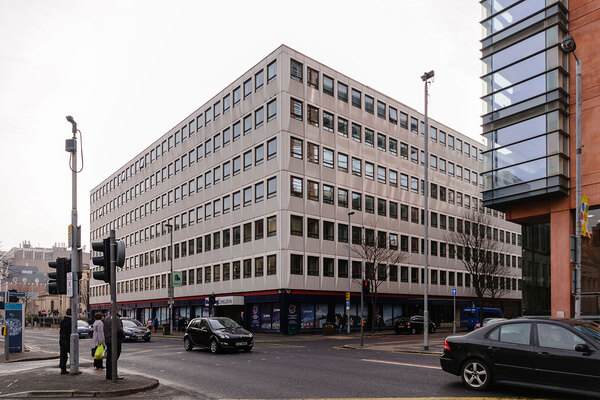The government’s housing plans need to understand the needs of rural communities
As part of the #PlanForHousing campaign, Roger Mortlock, chief executive of the countryside charity CPRE, discusses what a long-term plan for housing would mean for the affordability crisis in rural communities
Politicians, policy experts and the general public alike have spent the past few decades wondering what to do about the housing crisis that has left millions of people in the UK unable to afford the homes they need.
As we at CPRE know, the situation in rural parts of the country, while frequently overlooked, is often even more acute than in towns and cities.
It’s easy to get lost in grim statistics, however, and forget to imagine how much better things could be. Are genuinely affordable, high-quality homes in sustainable locations really too much to ask?
The government has pledged to build 1.5 million new homes, but there is a risk that these will do little to address the housing crisis unless they are – surprise, surprise – the right homes in the right places. Specifically, all these new homes will be of little use if people can’t afford to live in them.
Rates of homelessness in rural England have skyrocketed by 56% in just five years, in no small part due to the extraordinary disparity between house prices, which are significantly higher than those in towns and cities, and wages, which are lower.
Even when housing is classed as affordable, the reality is often starkly different. Currently, so-called affordable housing is defined as costing 80% of market value. In rural England, where the average house price is more than £400,000, that means an ‘affordable’ home might cost around £320,000.
Neither figure is remotely within reach of someone on the average rural salary of £25,600, let alone those receiving housing benefit.
“In rural England, where the average house price is more than £400,000, an ‘affordable’ home might cost around £320,000. Neither figure is remotely within reach of someone on the average rural salary of £25,600”
This is why CPRE is calling for affordable housing to be redefined in national policy, and pegged to average local incomes rather than the whims of an overheated housing market.
The countryside’s crisis of affordability is made worse by a proliferation of short-term lets and second homes. Action is required to stop rural parts of the country being drained yet further of skills, economic activity and vital public services. The government should introduce a register of both types of property and empower local authorities to make owning one less appealing by levying additional rates of council tax.
Local authorities should also be encouraged to make more use of Section 157 powers that allow them to restrict the resale of rural affordable housing for use as second homes and short-term lets. This would ensure more of it remained available to the very people who need it most.
Recent reports of a row within the government about the viability of providing more homes for social rent have been troubling. While the country as a whole is crying out for more social housing, the situation in rural England is nothing short of shocking. There are currently more than 300,000 people on housing waiting lists in the countryside, with little hope of that number being reduced anytime soon.
In recent years, as few as 348 new homes have been added to the rural social housing stock, while existing council properties continue to be sold off, reducing the available stock further.
At the current rate, it would take almost a century for everyone waiting to be offered a home, while sky-high rents, mortgage instability and rising house prices push more people onto housing waiting lists all the time.
When it comes to affordability, housing quality is another key factor. Building for energy efficiency and climate resilience makes homes cheaper to run and mitigates their negative impacts on the environment. New homes should be properly insulated and include rooftop solar panels as standard. Rumours that the government is planning not to include a requirement in the forthcoming Future Homes Standard for all new homes to be built with rooftop solar suggest yet another opportunity to help the planet and people’s purses is likely to be missed.
Building homes close to employment hubs and public transport are more ways to reduce living costs and environmental impact simultaneously. Discouraging car use has obvious benefits for health and the environment, while siting new developments close to existing infrastructure has the additional advantage of preserving our rapidly dwindling amount of countryside.
“If it’s serious about finally fixing the housing crisis, the government should set out a bold, joined-up approach that prioritises the development of brownfield land and the delivery of genuinely affordable and social rented homes”
There are enough shovel-ready brownfield sites in England alone for 1.2 million new homes close to where people already live, work and go to school. Making the most of the UK’s plentiful supply of brownfield sites will require a nationwide strategic plan that does not currently exist.
If it’s serious about finally fixing the housing crisis, the government should set out a bold, joined-up approach that prioritises the development of brownfield land and the delivery of genuinely affordable and social rented homes.
Crucially, big developers must not be permitted to renege on commitments to provide these categories of housing by claiming that building them would no longer be economically viable. What is unviable would be not to deliver the homes that people the length and breadth of this country so desperately need.
For too long, the conversation around housing delivery has pitted so-called builders against those dismissed as blockers. This sort of tired, divisive language isn’t going to get us anywhere. Instead, we need to cut through the artificial binaries and shine a light on practical, evidence-based solutions.
We know that people support the construction of affordable homes that reflect local need. A poll we conducted earlier this year with YouGov revealed that 71% of people were much less likely to object to a new housing development close to where they live if those homes were affordable and met the requirements of local people.
A home is a human right and the foundation for a decent life, but the broken system is failing to deliver. Our vision is of a new generation of genuinely affordable and social rented homes that are sustainable in design and location.
This means moving away from identikit car-dependent estates potholing the countryside and towards an approach that delivers homes people need, where they need them and at prices they can afford.
Roger Mortlock, chief executive, CPRE
Sign up for our daily newsletter
Already have an account? Click here to manage your newsletters













